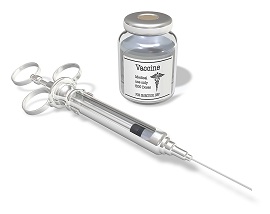
by Mary Holland, Louis Conte, Robert Krakow, and Lisa Colin
Pace Environmental Law Review
INTRODUCTION
Is the Vaccine Injury Compensation Program (“VICP”) ofthe U.S. Court of Federal Claims a fair forum? This is not atrivial question as it is the only forum in which parents maybring claims for vaccine injury to their children. Under the 1986 National Childhood Vaccine Injury Act (“1986 Law”), Congress created an administrative forum that it meant to ensure simplejustice for children; it gave the VICP original jurisdiction for allvaccine injury claims.1 Because almost all U.S. children must receive vaccinations to be able to attend daycare and school, it is of utmost importance that this tribunal provides equitable treatment, transparency, and justice to those children who have the grave misfortune to be injured by the very vaccines intended to keep them healthy.
The VICP has had a mixed history in the eyes of the families of the vaccine-injured. While some parents of vaccine-injured children supported the 1986 Law, over time many came to view it with “bitter disappointment.” Already by the mid-1990’s, HHS had reduced the grounds for presumptive causation, and thus recovery, for vaccine injury in ways that many observers found troubling. But the VICP’s greatest challenge yet lay ahead.
That challenge began in 2002, when nearly five thousand families filed petitions with the VICP claiming that vaccines had6caused their children’s neurological disorder called “autism.” Starting in the late 1980’s, the frequency of autism diagnoses began to skyrocket. In an unprecedented proceeding, the VICP created and conducted the Omnibus Autism Proceeding, consolidated hearings meant to bring justice to these claims. The VICP dismissed all the “test case” claims of vaccine-induced autism, and the Court of Appeals for the Federal Circuit upheld all the decisions on review.
Despite apparent judicial clarity and finality in these decisions, significant questions remain. Are the cases of “autism” that the VICP rejected in the Omnibus Autism Proceeding really different from the cases of “encephalopathy” and “residual seizure disorder” that the VICP has compensated before and since? Is it possible the VICP rejected cases of “autism” because of the hot-button label and not because of real differences in injuries or evidence?
This preliminary study suggests that the VICP has been compensating cases of vaccine-induced encephalopathy and residual seizure disorder associated with autism since the inception of the program. Through this preliminary study, the authors have found eighty-three cases of autism among those compensated for vaccine-induced brain damage. This finding raises fundamental questions about the integrity, transparency, and fairness of this forum.
This assessment of compensated cases showing an association between vaccines and autism is not, and does not purport to be, science. In no way does it explain scientific causation or even necessarily undermine the reasoning of the decisions in the Omnibus Autism Proceeding based on the scientific theories and medical evidence before the VICP. Nor does this article have anything to say about state childhood immunization mandates in general.
What this article does point to are unanswered questions about vaccines and autism, a thorny issue that affects approximately one in one hundred and ten children. On this point, this study strongly suggests the need for further Congressional and scientific investigation to explore the association between vaccine-induced brain injury and autism and the integrity of this federally-administered compensation program.
In Part I, we review the 1986 Law that created the VICP and the Omnibus, background information on autism, the Department of Health and Human Services’ (“HHS”) concession in the Poling case, and attempts to get information about autism from compensated cases of vaccine injury. Part II details the published cases in the VICP that note autism or autism-like symptoms and information about settled cases manifesting autism that parental caregivers have confirmed. It discusses the cases and includes representative questionnaire responses from parents and caregivers. Part III highlights unanswered questions, makes recommendations, and draws conclusions. Appendices include diagnostic information, definitions, excerpts from a Freedom of Information Request, a list of previously published articles evaluating compensated cases from the VICP, and a copy of the parent structured interview form.
Read the Full Study here: http://digitalcommons.pace.edu/pelr/vol28/iss2/6/
Vaccine Epidemic
How Corporate Greed, Biased Science, and Coercive Government Threaten Our Human Rights, Our Health, and Our Children
by Louise Kuo Habakus and Mary Holland J.D.
FREE Shipping Available!
More Info




